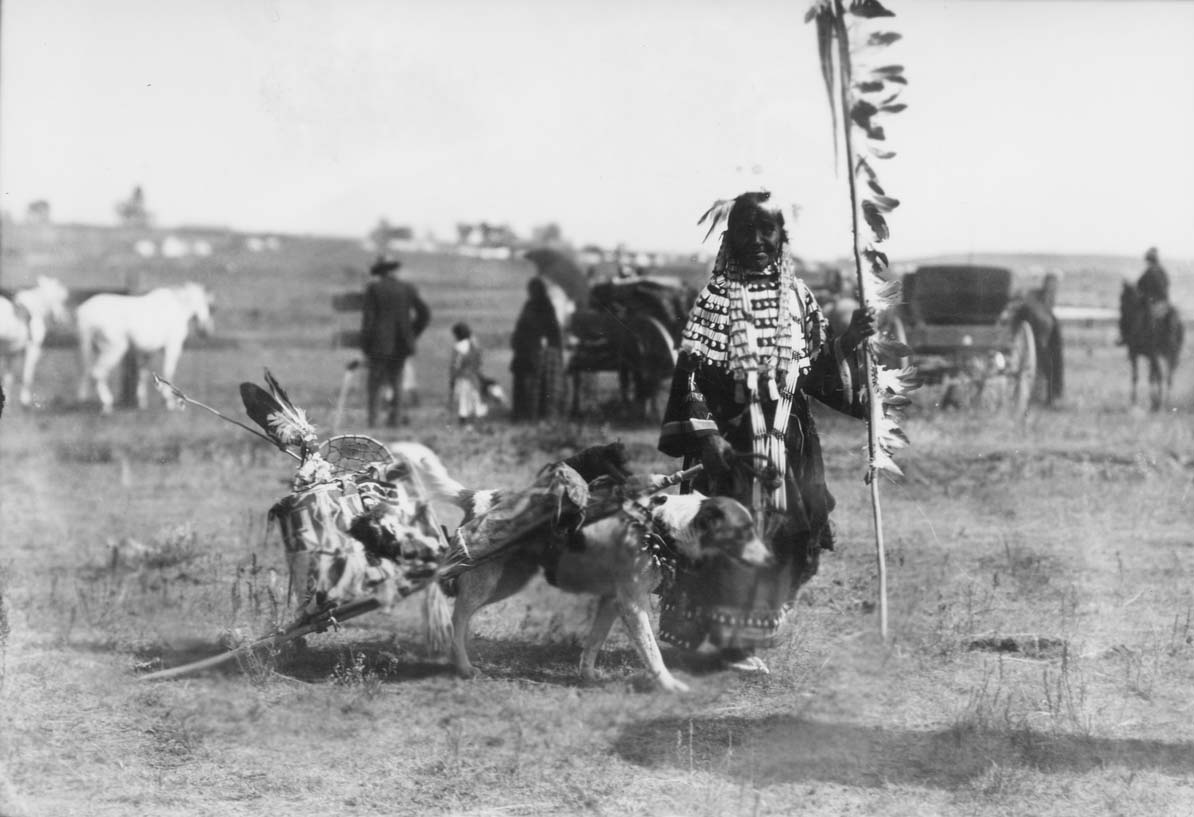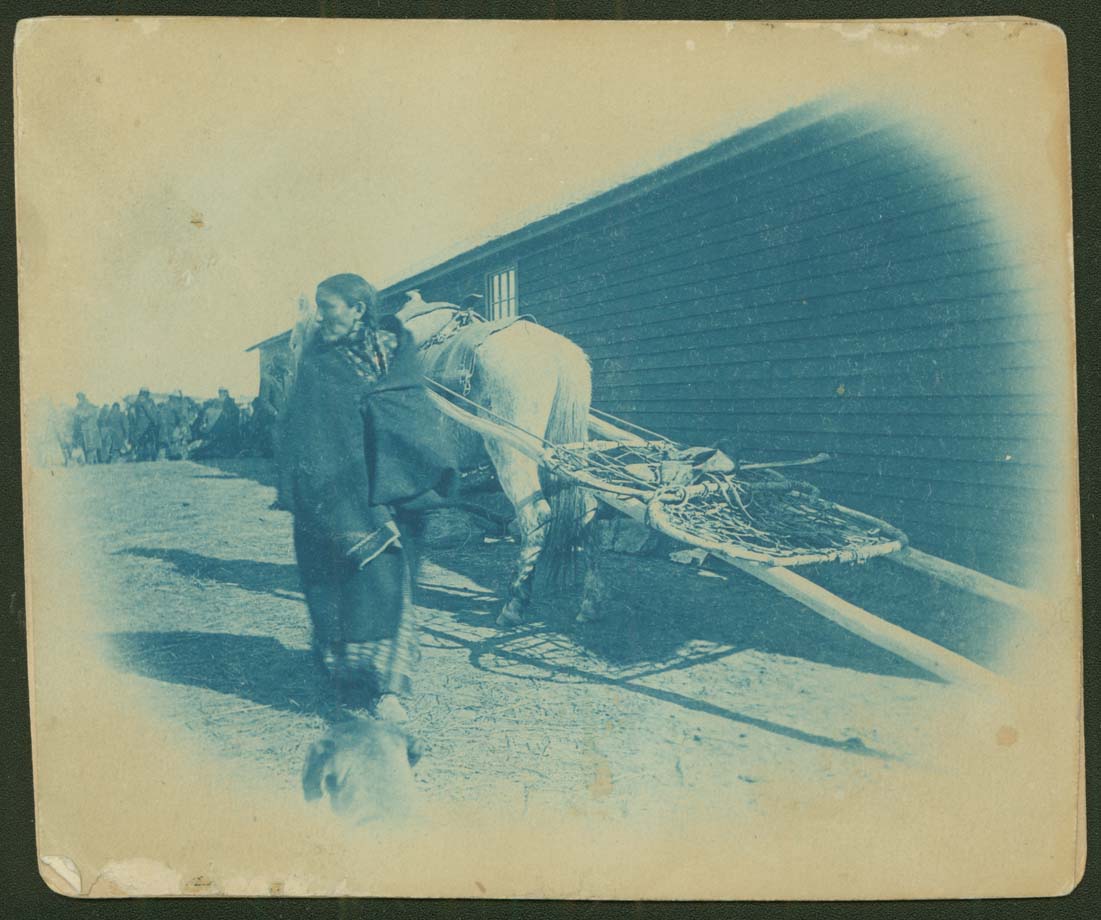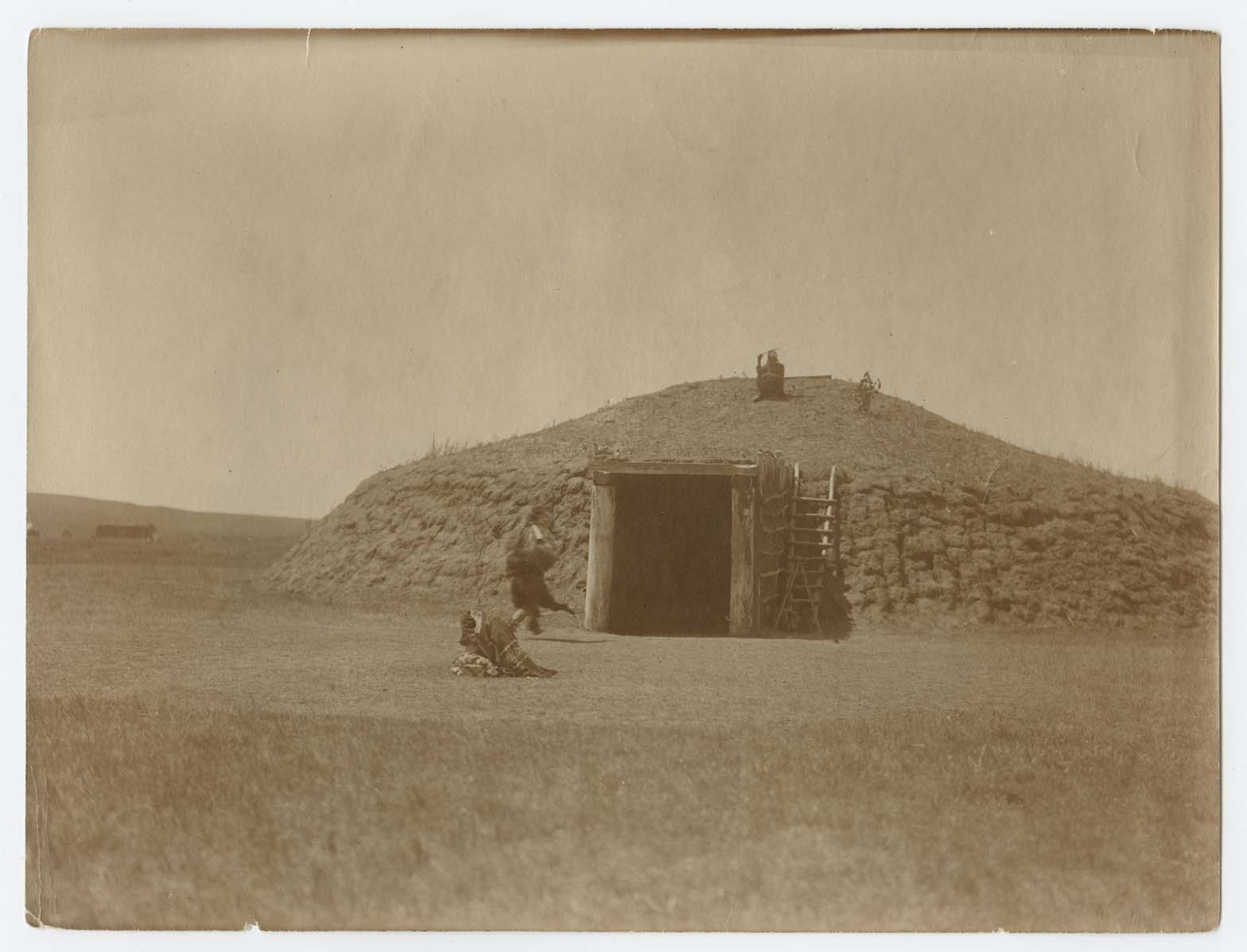The second supporting question, “What was the significance of La Verendrye’s visit to the Mandan villages?” helps students use sources to unwrap the context of the time and topic being examined. The first written account of European men to visit the northern plains is that of Pierre Gaultier deVarennes et de La Verendrye, a French Canadian-born explorer and trader. La Verendrye had established trading posts in southern Canada and was actively engaging in the beaver pelt trade near Lake Winnipeg. La Verendrye was also interested in searching for the fabled Northwest Passage, a river transportation route that, if found, would cut across North America to the Pacific Ocean and make it easier to establish new trade routes. Curious, and ever interested in expanding his business opportunities, La Verendrye organized an expedition to meet the Mandan he had heard lived in large houses in villages along the Missouri River. The Assiniboine who were already trading partners led La Verendrye to a Mandan village in 1738. La Verendrye’s party consisted of fifty-two people including two of La Verendrye’s sons, twenty hired men (French or descendants of Frenchmen), and twenty-five Assiniboine men and women. The journey took forty-six days. Along the way, La Verendrye met the residents of an Assiniboine village he had not yet brought into his trading system. He told them that they would now have the French as trading partners and must hunt beaver for the trade. According to La Verendrye’s reports, the Assiniboine welcomed the French and their trade system. Finally, on 28 November 1738, La Verendrye met the Mandan. His journals contain the first known report by a European of the Mandan and their ways. “Their fort is very well provided with cellars where they store all they have in the way of grains, meat, fat, dressed skins and bearskins. They have a great stock of these things, which form the money of the country. The more they have the richer they consider themselves.” (p. 342). The fort La Verendrye described was a Mandan village with a stockade of posts that defined and protected the village.
“There were about one hundred and thirty [houses]. All the streets, squares, and cabins are uniform in appearance; often our Frenchmen would lose their way in going about. They keep the street and open spaces very clean; the ramparts are smooth and wide; the palisade is supported on cross pieces mortised into posts fifteen feet apart with a lining. For this purpose, they use green hides fastened only at the top in places where they are needed. As to the bastions, there are four of them at each curtain well flanked. The fort is built on an elevation in mid-prairie with a ditch over fifteen feet deep and from fifteen to eighteen wide. Entrance to the fort can only be obtained by steps or pieces [of wood] which they remove when threatened by the enemy” (p. 339-340). According to La Verendrye, the Mandan addressed him as father and a Mandan leader told him that he would be well cared for and supplied with all the food they needed.
La Verendrye watched as the Assiniboine traded for:
“...coloured buffalo robes, deer and buck skins, carefully dressed and ornamented with fur and feathers, painted feathers and furs, worked garters, head-bands, girdles. Of all the tribes they [the Mandan] are the most skilful in dressing leather, and they work very delicately in hair and feathers .... They are sharp traders....” (p. 332)
He also reported details about daily life in the village. Mandan homes were:
“...large and spacious, divided into several apartments by wide planks. Nothing is lying about: all their belongings are placed in large bags hung on posts….” (p. 340-341)
The Mandan also made baskets, woven mats, and clay pots. Horses had not yet come to the Mandan and La Verendrye did not bring any, having traveled on foot and by canoe. The lives of the Mandan would change in the next several decades. They acquired horses which eased the burden of transport, and metal pots which were especially helpful in cooking. Soon guns and knives with metal blades would make hunting more efficient and improve their position in trade with both European Americans and other Indian tribes. La Verendrye’s journal can be checked out of the North Dakota State Library via inter-library loan. The journals are also available on the internet, behind a paywall, at www.champlainsociety.ca. Complete the following task using the sources provided and additional library and internet resources to build a context of the time period and topic being examined.
La Verendrye, Pierre Gaultier de Varennes et de and Lawrence J. Burpee, ed. Journals and letters of La Vérendrye and his sons. Toronto: Champlain Society, 1927.
Formative Performance Task 2
Use the information from Featured Sources A-D, and additional sources from library and internet research, to create a map or a timeline that depicts what Verendrye’s visit to the Mandan was like. Where did he go? Who did he meet? How do we know? What else can you find?
Featured Sources 2
Featured sources A-D are a combination of primary and secondary sources. Secondary sources are accounts or interpretations of historical events, people, places, and ideas by someone who does not necessarily have firsthand experience of the subject. This is the material that historians and other researchers have written about primary sources and the events, ideas, and people of history. These are the products of historical work including exhibits, websites, documentaries, performances, books, and other publications. When students read or view secondary sources, they should pay careful attention to the bibliography. What sources did the author use? Are they reliable evidence to support their claims? When students read or view secondary sources, they should also explore additional sources, including primary sources, to get an accurate understanding of the context and if the author wrote a valid, accurate, and thoughtful interpretation. What is the author’s historical argument, or thesis statement? Are their claims logical and supported by evidence? Further research of materials and sources can either prove or disprove the students’ argument. Though the following photographs were taken between 1900 and 1920, they reveal how life on the northern Great Plains changed when horses were acquired.
| Source A | 
The dog travois was the common means of transport when La Verendrye visited the Mandan Villages. However, within a few decades, horses had increased the possibilities for travel and hunting with their greater size and strength. A horse could carry more and heavier supplies (as well as people) than could a dog with a travois. SHSND Fiske photo: 1952-5560. |
| Source B | 
This photograph of Mrs. Charging Thunder standing in front of a horse and travois was printed as a cyanotype which accounts for the blue tinge of the photograph. SHSND 0036-020-1. |
| Source C | 
Though this photograph was taken in the 20th century, the typical Mandan earthlodge had not changed greatly since the time of La Verendrye’s visit. La Verendrye described the lodges and the interiors in his report on his journey to the Missouri River villages. SHSND 00086.0036.01405. |
| Source D |
People of the Upper Missouri Online Exhibit The confluences of the Knife, Heart, and Missouri Rivers in North Dakota have been the home and meeting place of peoples of many cultures for thousands of years. Native American hunters once roamed the area in search of bison and other large game. This region was also a highway for native traders dealing Knife River flint, a translucent, coffee-colored stone quarried along the banks of the Knife and its tributaries to the west. This stone was widely traded throughout much of North America. Beginning about 1,000 years ago, the big-game hunting cultures were replaced by village farmers who were the ancestors of the Mandan and Hidatsa. For many generations, their villages were the focal point of an extensive trade system, which linked the largely sedentary farmers, who dealt in corn and other garden produce, with migratory tribes who dealt in weaponry, clothing, exotic raw materials, and ornaments. |


